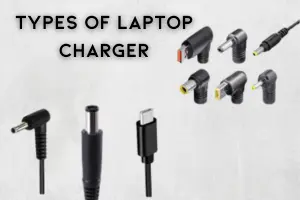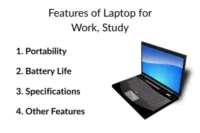Quick Fixes for Windows Installer Errors – Step-by-Step
Published: 17 Feb 2025
If you have ever encountered a problem while attempting to install an application, then it’s more than likely that you have come face to face with a Windows installer error.
These errors arise because of several different reasons Windows installer error indicates that there is a problem with the installer package which is prohibiting it from completing the installation process. Repairing this problem is possible, but the exact solution may vary.
The basic idea behind an installer error is essentially the computer system’s inability to read a particular file or files that are required for the installation process to be run, this in turn prevents the end user from installing the application. Fixing this problem first requires the end user to figure out, exactly what is causing the problem, and from there they can attempt to repair it.
That said there are several general fixes that you can attempt. All of which I have chosen to outline below.
Ensure Windows Installer Service is started
The first thing you’ll want to be sure of, before anything else is that Windows Installer is actually running. Establishing this is relatively simple, just do the following:
1. First, boot into your computer with administrative privileges.
2. Then press Windows Key + R, to open the Run Command box, and type Services.msc into it and click on OK.

3. Once Services loads up, navigate to Windows Installer and double click on it.

4. This will open up Windows Installer Properties; from here you can determine whether or not the service is running, under Service Status, if it is not, simply click on Start, then OK and attempt to install the application again.

Delete the MSIEXEC File
Another thing that is capable of causing Windows Installer to not work correctly is the creation of a second MSIEXEC file. Sometimes there will be a second one of these files located in the following directory:
C:WindowsSystem32
By default, you should only have one of these files in that location; typically the second one will have a file size of 0 KB with no file extension. If you find that there is a second file in your case, then you should rename the second MSIEXEC file to MSIEXEC.OLD. Once you have successfully renamed the file, you can restart the Windows Installer service, using the instructions above.
Update Windows Installer
Apart from the possible solutions above, it’s always a good idea to ensure you have the most up-to-date version of Windows Installer running on your computer. There is a good chance that your version of Windows Installer is outdated without you even knowing it. In this particular situation, upgrading it should be sufficient in fixing any installation problems you may be having.
Unregister and Re-register Windows Installer
Another method that has proven to be quite effective at fixing any problems with the Windows Installer entails re-registering the Windows services. To do this, simply do the following:
1. First, boot into your computer with your administrative user profile. 2. Then press Windows Key + R, type cmd into the Run Command box and click on OK.
2. Then press Windows Key + R, type cmd into the Run Command box and click on OK.

3. When Command Prompt loads up, type MSIEXEC /UNREGISTER, and then press Enter.

4. Lastly, type MSIEXEC /REGISTER and press Enter.

Now you can try installing the application you were having problems with.
Run System File Checker
System File Checker is a built-in Windows tool designed for restoring previously damaged or erased Windows system files. Since Windows Installer is a system process, the integrity of the system files will determine whether or not it and many other processes will function optimally. Thankfully, System File Checker is available to both check these files and replace them were necessary.
Anyway, you can run this powerful tool by doing the following:
1. First, boot into your computer with full administrative rights.
2. Then press Windows Key + R, type cmd (into the Run Command box) and click on OK.

3. Once Command Prompt loads up, type sfc /scannow and press Enter.

| Note: |
|---|
|
If System File Checker is unable to replace a file using the cache folder on your hard drive, it will request you put the Windows CD into the CD-ROM drive in order to continue. |
Modify Remote Procedure Call Service
Sometimes problems with the Windows Installer can be caused by the Remote Procedure Call service. To fix or rather eliminate this as a prime culprit, simply do the following:
1. First, boot into your computer, with administrative rights.
2. Then press Windows Key + R, type Services.msc into the Run Command box and click on OK.

3. Once Services loads up, double click on Remote Procedure Call.

4. This will load up the Remote Procedure Call Properties, from here click on the Log On Tab, then select Local System Account for Log on as, and tick the box next to Allow services to interact with desktop and click on OK.

5. Restart your computer and try and install the application again.
6. If it still doesn’t work, then using steps 1 – 3, click on the Log On Tab, then click on this account, from here click on the Browse button.

7. Then type Network Services into the Enter the object name to select box and click on Check Name, followed by OK.

8. The password should fill automatically. So click on OK, to close the Properties applet and restart your computer.

Conclusion
In this post, We’ve discussed how to fix Windows Installer errors. Checking the Windows Installer service and updating system files are two steps that will help you quickly fix the problem. Begin with the simplest options, such as restarting the service, before progressing to more complicated fixes. Don’t let installation problems hold you back—use these fixes right away! Please share this guide with others who might need it if it helps you.

- Be Respectful
- Stay Relevant
- Stay Positive
- True Feedback
- Encourage Discussion
- Avoid Spamming
- No Fake News
- Don't Copy-Paste
- No Personal Attacks

- Be Respectful
- Stay Relevant
- Stay Positive
- True Feedback
- Encourage Discussion
- Avoid Spamming
- No Fake News
- Don't Copy-Paste
- No Personal Attacks





